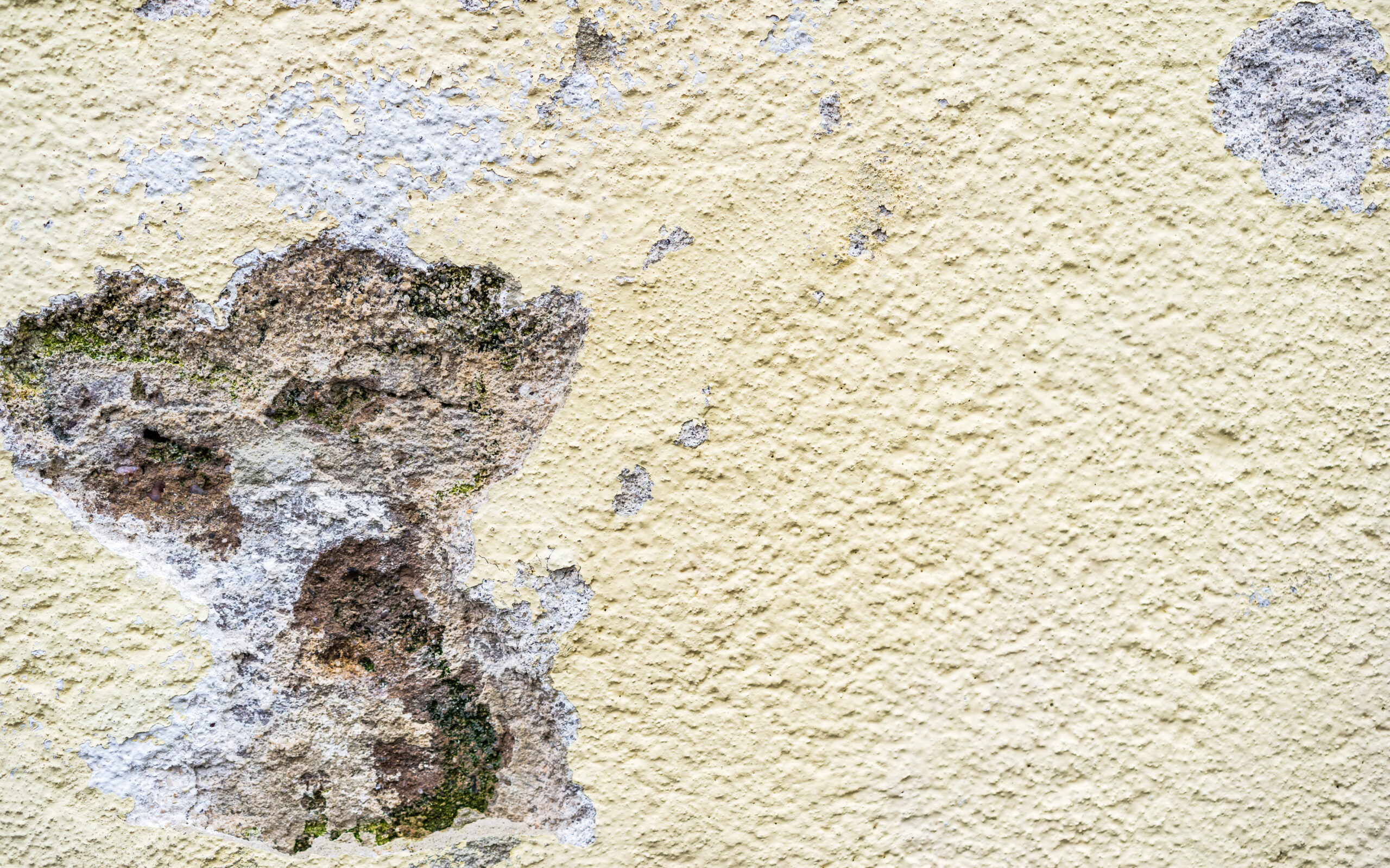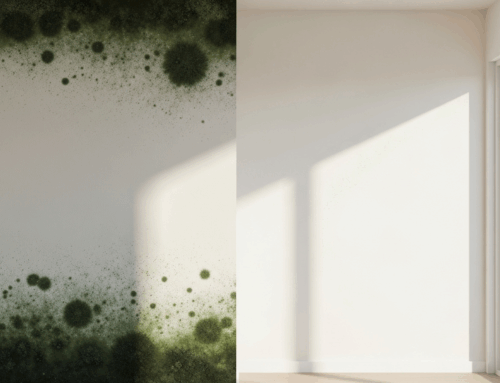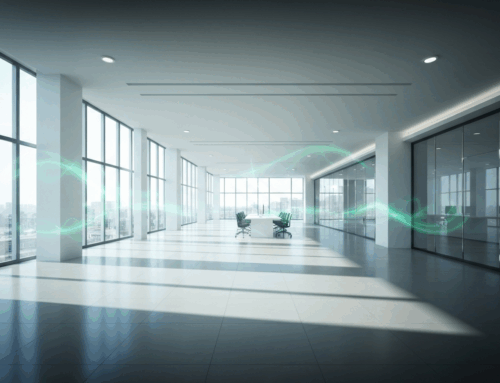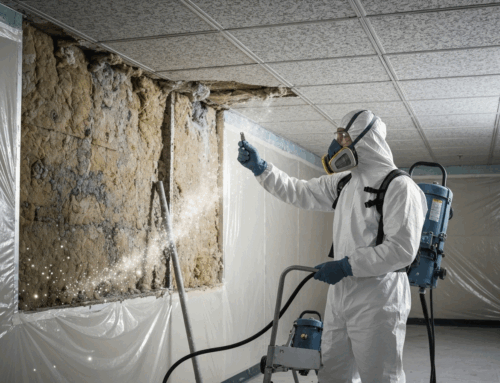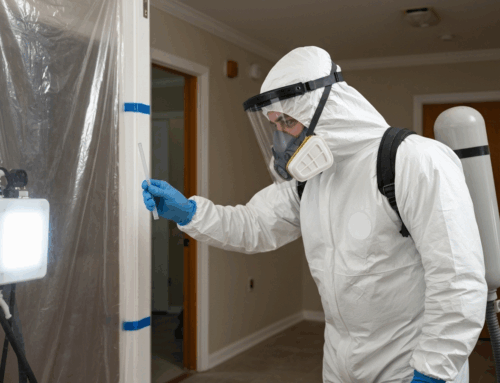Hidden Hazards After the Storm Identifying Risks to Your Property
After a severe weather event, such as a hurricane or significant flood, the immediate dangers might seem to subside once the winds die down and waters recede. However, for homeowners, property managers, and businesses across South Carolina, a new set of critical challenges emerges: hidden hazards like asbestos and mold. Addressing these issues correctly is paramount for effective Post-Hurricane Asbestos Mold Remediation SC.
Storm damage, whether from high winds, direct water intrusion, or prolonged humidity, can compromise the structural integrity of a building. This damage can inadvertently disturb materials that were once stable, releasing microscopic, harmful particles into the air. Identifying these risks early is crucial for protecting health and ensuring a safe environment during recovery efforts. Without proper assessment, what seems like minor damage could lead to significant long-term health concerns and costly repairs.
Understanding Asbestos Presence in Post-Hurricane Damage
Asbestos, a fibrous mineral prized for its heat resistance and insulating properties, was a common component in a wide array of building materials until its health risks became widely known. If your property in South Carolina was built before the 1980s, there’s a higher likelihood that asbestos-containing materials (ACMs) were used in its construction. These might include:
- Roofing shingles and siding
- Floor tiles and their adhesive
- Ceiling tiles and textured ceilings (often called popcorn ceilings)
- Insulation (attic, wall, pipe, and boiler insulation)
- Drywall and joint compound
- Pipes and ducts
When these materials are intact and undisturbed, they generally pose minimal risk. However, the violent forces of a hurricane—wind, rain, and debris impacts—can easily damage, tear, or pulverize these materials. This process can render previously stable ACMs friable, meaning they can crumble easily and release hazardous asbestos fibers into the air. Inhaling these invisible fibers can lead to severe respiratory diseases, including lung cancer and mesothelioma, often many years after exposure. Therefore, recognizing the potential for asbestos contamination is the first step in ensuring a safe recovery process.
Crucial Steps for Post-Hurricane Asbestos Mold Remediation SC
Effectively managing post-hurricane asbestos and mold issues in South Carolina demands a systematic and professional approach. Piedmont Quality Air employs experienced and trained professionals who utilize specialized equipment to ensure adherence to federal and state regulations. Here are the crucial steps involved in comprehensive remediation:
- Thorough Assessment: The process begins with a detailed inspection to identify all affected areas and determine the extent of asbestos and mold contamination. Samples of suspicious materials are collected and sent to accredited laboratories for analysis.
- Containment: Once hazards are confirmed, the affected areas are sealed off using advanced containment techniques, including negative air pressure systems and critical barriers. This prevents the spread of airborne particles to unaffected parts of the building.
- Hazardous Material Removal: Our certified technicians, equipped with appropriate personal protective equipment (PPE), carefully remove asbestos-containing materials using wet methods to minimize fiber release. For mold, the remediation involves identifying the moisture source, cleaning and treating affected surfaces, and removing contaminated porous materials.
- Comprehensive Cleaning & Decontamination: After removal, the work area undergoes meticulous cleaning. This includes HEPA-filtered vacuuming and wet wiping of all surfaces to eliminate any remaining microscopic fibers or mold spores.
- Air Clearance Testing: An independent third-party industrial hygienist conducts air sampling to ensure that airborne asbestos fiber levels and mold spore counts are below regulatory limits and safe for re-occupancy. This step provides reassurance and verifies the success of the remediation.
- Structural Drying & Prevention: For mold remediation, thoroughly drying the affected structure and addressing the underlying moisture source is critical to prevent recurrence. This often involves industrial dehumidifiers and air movers.
Minimizing Exposure and Ensuring Safety During Cleanup
When your property has sustained damage, the urge to begin cleanup immediately is strong. However, safety must be your top priority, especially when dealing with potential asbestos and mold. For Post-Hurricane Asbestos Mold Remediation SC, accidental exposure can lead to serious health issues. Here are some key practices to minimize risks:
- Assume Contamination: If your property is older or suffered significant water damage, assume asbestos or mold might be present until a professional assessment proves otherwise. Avoid disturbing damaged materials.
- Ventilation with Caution: While ventilation is good for general drying, do not use standard fans that could potentially spread asbestos fibers or mold spores throughout the property.
- Avoid Dry Methods: Never sweep, vacuum with a regular vacuum, or dry-scrape materials you suspect contain asbestos or mold. These actions can release harmful particles into the air.
- Moisture Control: For mold, prompt drying of wet areas within 24-48 hours is crucial to prevent growth. For asbestos, keeping materials wet during careful removal can help suppress fiber release, but this should only be done by trained professionals.
- Personal Protective Equipment (PPE): If you must enter a damaged area before professional assessment, wear at least an N95 respirator, disposable gloves, and disposable coveralls. Dispose of these items safely afterward.
- Limit Access: Keep children, pets, and anyone not directly involved in professional cleanup away from damaged areas.
The health and safety of your family or employees are paramount. For comprehensive and safe handling of hazardous materials, trusting experienced professionals is always the wisest choice. For further guidance on post-disaster mold cleanup, refer to FEMA’s guide on mold cleanup in South Carolina and EPA’s comprehensive guide for homeowners and renters.
Navigating Regulations and When to Call Licensed Professionals
South Carolina has specific regulations regarding asbestos removal, particularly for commercial properties and residential buildings with more than four dwelling units. While federal and state regulations may be less stringent for owner-occupied single-family homes, the health risks remain severe. For any significant remediation, especially in an older property, a licensed and experienced professional is indispensable for effective Post-Hurricane Asbestos Mold Remediation SC.
Licensed asbestos abatement contractors are trained to identify asbestos-containing materials, establish proper containment, use specialized equipment to safely remove and dispose of hazardous materials, and perform necessary air clearance testing. They also handle the required notifications and permits with the South Carolina Department of Environmental Services (SCDES).
Similarly, while mold remediation doesn’t always have the same level of strict regulation as asbestos, professional intervention is highly recommended for widespread growth or if individuals with health sensitivities are present. A professional mold remediation company will not only remove the mold but also identify and rectify the moisture source to prevent future outbreaks.
At Piedmont Quality Air, our professionals are experienced and trained to navigate these regulations and ensure all work is compliant and safe. We prioritize the safety and health in living and working environments, providing peace of mind to property owners. Our expertise extends to the process of professional mold inspection in South Carolina, which is crucial for accurate detection and remediation planning.
Proper Disposal of Contaminated Materials and Debris
Once asbestos and mold-contaminated materials have been safely removed from your South Carolina property, proper disposal is a critical final step. This is not a task for casual cleanup; hazardous waste must be handled and transported according to strict regulations to prevent further environmental contamination and public exposure.
- Asbestos Disposal: Asbestos-containing materials are classified as hazardous waste. They must be wetted, double-bagged in specific, clearly labeled bags, and transported by licensed hazardous waste haulers. Disposal can only occur at landfills specifically permitted to accept asbestos waste. Attempting to dispose of asbestos improperly is illegal and poses significant health risks.
- Mold-Contaminated Materials: While not subject to the same stringent disposal requirements as asbestos, heavily mold-contaminated porous materials (e.g., drywall, insulation, carpets) should be carefully bagged to prevent spore dispersal during transport. These materials can often be disposed of in regular construction debris landfills, but local regulations should always be confirmed.
- Site Cleanup: After removal, the entire work area is thoroughly cleaned using HEPA-filtered vacuums and wet cleaning methods. All debris, including disposable PPE used by technicians, is also safely contained and disposed of.
Piedmont Quality Air manages the entire disposal process, ensuring that all hazardous and contaminated materials are transported and disposed of safely and in full compliance with all federal and South Carolina state regulations. This includes proper packaging, labeling, and transportation to approved facilities. For more details on the safe handling of hazardous materials, including those before demolition, consider our insights on safe handling of hazardous materials.
Dealing with post-hurricane damage is stressful enough without the added worry of hidden hazards. By understanding the risks of asbestos and mold and entrusting the remediation to experienced professionals, you can ensure a safer, healthier future for your property and its occupants in South Carolina. For a free estimate and professional guidance on Post-Hurricane Asbestos Mold Remediation SC, contact Piedmont Quality Air today.
Have questions? Contact us here.

